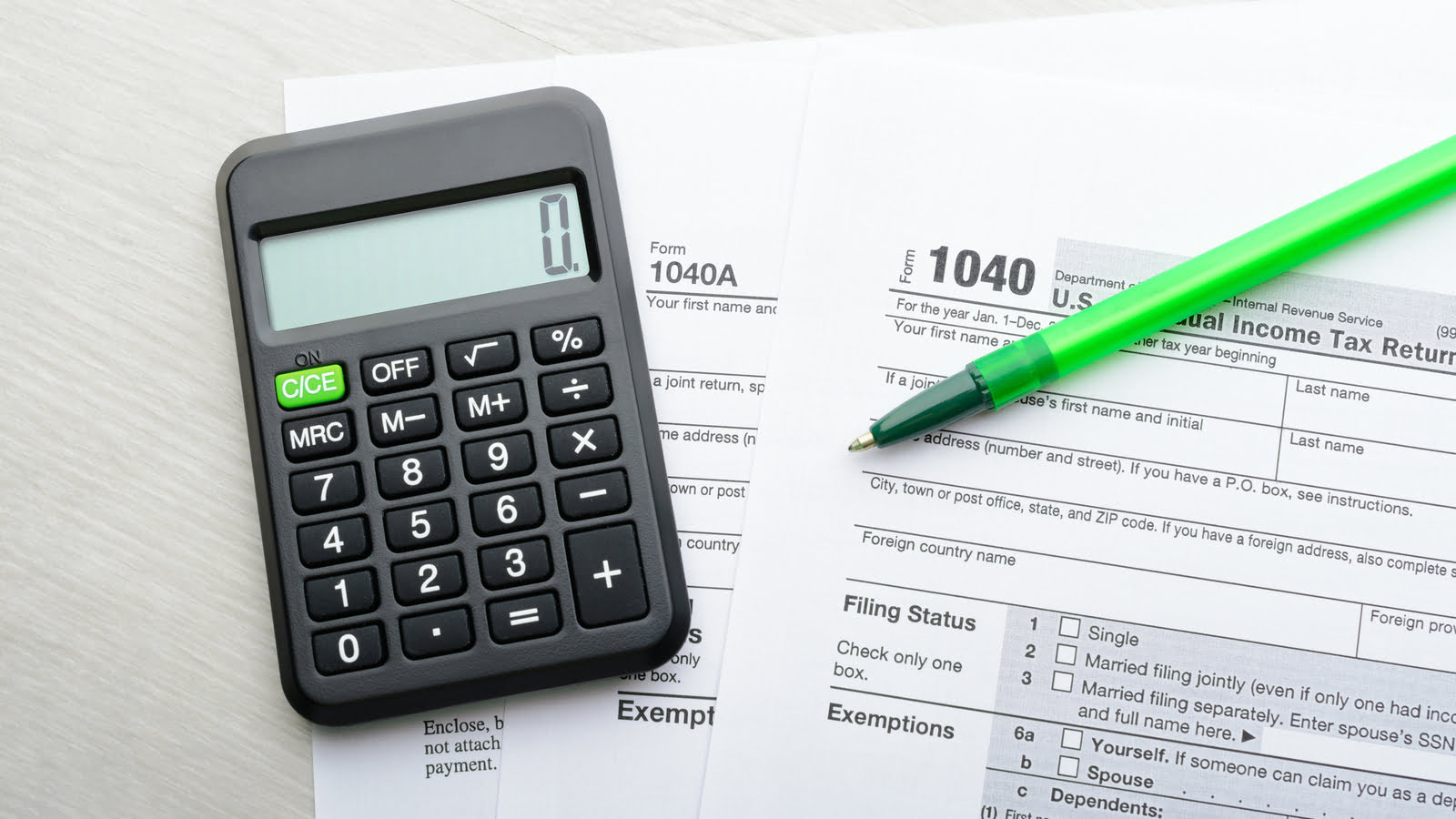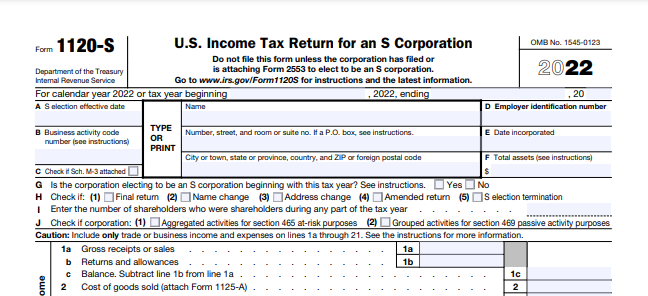A quick primer on the most important IRS forms, from W-2s to 7004s.
Nearly everyone will send or receive IRS forms at some point, and that’s especially true for business owners. The full list of forms can be daunting, so here’s a quick explanation of some of the most common types you might need in your professional life.
Contents |
| What kinds of forms are there? |
| Forms you might receive |
| Forms you might send |
| Other questions |
So, what kinds of forms are there?
Forms you receive
Receiving forms from the IRS is generally a part of annual tax-related processes. For example, Form W-2 is typically sent by your employer to report your annual wages and the amount of taxes withheld from your pay. Similarly, you might receive a 1099 form from your clients if you've done freelance work. These documents are crucial for preparing your tax return, as they provide the necessary data to calculate your tax liability or refund. Not only do they ensure you pay the correct amount of tax, but they also help you substantiate your income and deductions if you're ever audited.
Forms you send
You or your tax professional would send forms to the IRS for various reasons. All centered around one critical task - accurately calculating and paying your taxes. These forms communicate essential information about your income, deductions, credits, and other tax-related details. The IRS needs this information to ensure you're paying the correct amount of tax and to maintain an accurate record of your financial history.
Forms you might receive
Some forms will be completed by other people and given to you. These forms will contain information you need to complete your tax returns like recorded wages or other forms of income, so it’s important to hang on to these throughout the year.
Form W-2
Possibly the most well-known IRS form, Form W-2 is prepared by employers to report wages paid and taxes withheld. Employers are required to send them out to each employee far enough in advance for them to complete their tax returns on time.
But wait, what about W-1s? Don’t worry about it, we stopped using those in the 1950s.
Form 1098 series
The 1098 series generally shows payments you’ve made throughout the year, like interest on mortgages or student loans. There’s a variety of Form 1098 subtypes, common examples being:
- Form 1098: Form 1098, also known as the Mortgage Interest Statement, is sent by your mortgage lender to report the amount of interest and related expenses you paid on your mortgage during the tax year.
- Form 1098-T: Form 1098-T, also known as the Tuition Statement, is issued by educational institutions to students to report amounts paid for qualified tuition and related expenses during the tax year, which can potentially allow students or their parents to claim education-related tax deductions or credits.
Form 1099 series
The 1099 series is used to record all income that isn’t salary, wages or tips. This can include money paid to you as an independent contractor (freelances and consultants will be very familiar with these), money coming from your investments and reporting of real estate transactions. Here are a few examples of the ones you'll want to know about:
- Form 1099-MISC is a tax document issued by businesses to independent contractors, freelancers, or other self-employed individuals who have been paid $600 or more during the tax year for services performed.
- Form 1099-NEC is a tax document that businesses use to report payments of $600 or more to non-employees, such as independent contractors or freelancers, replacing box 7 of the previously used Form 1099-MISC.
- Form 1099-R is a tax document issued by banks and other financial institutions to individuals who have received distributions from pensions, annuities, retirement or profit-sharing plans, IRAs, or insurance contracts throughout the tax year.
- Form 1099-DIV is a tax document provided by banks and other financial institutions to individuals who have received dividends and other distributions from investments during the tax year.
- Form 1099-INT is a tax document issued by banks and other financial institutions to individuals who have earned $10 or more in interest income during the tax year, such as from a savings account or investment.
- Form 1099-B is a tax document issued by brokers and barter exchanges to individuals who have sold stocks, bonds, mutual funds, and other securities, providing essential information about the sale that is required for tax reporting purposes.
- Form 1099-S is a tax document issued by real estate brokers, attorneys, or other individuals involved in selling or exchanging real estate property, providing details about the proceedings of the transaction for tax reporting purposes.
Lucky for you, brokerage houses usually will combine Forms 1099-DIV, 1099-INT and 1099-B into what they call a "Consolidated Form 1099" so you don't have to track multiple forms.
Forms you might send
These are the “doing your taxes” forms: the ones you (or a qualified tax professional) will be preparing and sending to the IRS.
Form 1040
You’re likely familiar with Form 1040, used for personal tax returns, the IRS states this form is "small" since it's only two pages. However, you'll more than likely include one or more of the following schedules:
- Schedule 1 is utilized to report additional types of income such as alimony, capital gains, rental real estate, and unemployment compensation, as well as deductions you may not have been able to claim on your standard Form 1040.
- Schedule 2 is used to list additional taxes, such as the alternative minimum tax or taxes on other forms of income like a child's unearned income from investments.
- Schedule 3 is designed for reporting nonrefundable credits other than the child tax credit or the credit for other dependents, like the foreign tax credit, education credits, and general business credit.
- Schedule A is designed to itemize allowable deductions, such as medical and dental expenses, state and local taxes, home mortgage interest, and charitable contributions, potentially lowering your taxable income if they exceed the standard deduction.
- Schedule B is required for reporting income from interests and ordinary dividends that exceed specified thresholds.
- Schedule C is necessitated for reporting income or loss from businesses you operated or a profession you practiced as a sole proprietor. If you run a business as a sole proprietor, including a Single-Member LLC, that income goes here.
- Schedule D is utilized to report capital gains and losses from property, real estate, and investments to determine the correct amount of tax owed.
- Schedule E is employed for reporting income or loss from rental real estate, royalties, partnerships, S corporations, estates, trusts, and residual interests in Real Estate Mortgage Investment Conduits (REMICs).
- Schedule SE is designed for self-employed individuals to calculate the tax due on net earnings from self-employment.
... and these are just the major ones. The list goes on, which is another great reason to work with a tax professional.
Form 1065
Form 1065 is the income tax form for partnerships. It’s filed by a partnership to declare profits, losses, and deductions. In addition, partnerships need to file Schedule K-1 to declare the income going to each partner. You can think of the K-1 as a W-2 for owners instead of employees.
Form 1120
Form 1120 is used by C-corps to file their tax returns. Unlike other business entities, C-corps are taxed directly. Corporations with assets of $10 million or more are required to file taxes online if they weren’t doing it already.
Form 1120-S
As the name suggests, Form 1120-S is used by S-corps to file their tax returns. In addition to reporting profits, losses, and deductions, Form 1120-S tells the IRS how ownership of the company is divided up, which determines how much each owner owes on their personal income taxes. Similarly to Form 1065, these also use Schedule K-1s to declare the income distributions between the owners.
Form 2553
Form 2553 is a handy tool for corporations and LLCs that want to be treated as an S corporation for tax purposes. By filling out this form and getting the thumbs up from the IRS, companies can pass on corporate income, losses, deductions, and credits to their shareholders for federal tax purposes. This comes with potential tax benefits and helps companies dodge the dreaded double taxation issue many corporations face. Pretty cool, right?
Form 4868
Form 4868 is an essential document for those individuals who may need a little extra time to prepare their annual income tax returns. This form serves as an application for an automatic extension to file an income tax return. By submitting Form 4868, individuals can get an additional six months to complete and submit their detailed returns without facing the usual penalties for late submission. However, it's important to note that while Form 4868 extends the filing deadline, it doesn't provide an extension for any payment of taxes due. Therefore, you're still expected to estimate and pay any owed taxes by your regular due date to avoid potential interest and penalties.
Form 7004
While Form 4868 above is used for individuals, Form 7004 is used for nearly any other type of tax return you might be required to file. You'll be granted a five or six month extension, depending on what you are extending. This flexibility gives you, and your tax professional if you are using one, additional time to make sure everything is in order once your return is finalized.
Other questions
What dates are all these forms due?
Keeping track of multiple due dates can be overwhelming. That's why we maintain an updated list of every major deadline, including any extensions, to help you stay organized. If you work with a tax professional, they will have their own software to monitor each of your tax return due dates. Rest assured, we've got you covered.
Are there other forms we haven't covered?
There sure are! We covered the most important, commonly encountered forms, but there’s plenty more out there. Try not to let that stress you out. We've built a comprehensive Tax Form Library with information on the most common forms filed with the IRS.
Do I ever have to file more than one of these forms?
Not everyone is technically required to file Form 1040 every year, but for paperwork reasons, everyone probably should.
If you’re a business owner (other than a sole proprietorship), you’ll need to file a form or two for your business, and if you’ve got more than one business, each one will need its own forms.
Which form do I use for my LLC?
LLCs can be taxed in a variety of ways, from sole proprietorships to partnerships to corporations. Make sure to check how your LLC is structured before filing your tax returns.
Bottom line
That’s a lot of forms, right? Luckily, most people only need to worry about a handful of them – whatever is most relevant to their work and their businesses. Just keep track of which types of forms your business requires and you’ll do fine.
And for maximum peace of mind, schedule a call with the tax professionals at DiMercurio Advisors and we’ll handle the complicated stuff.







